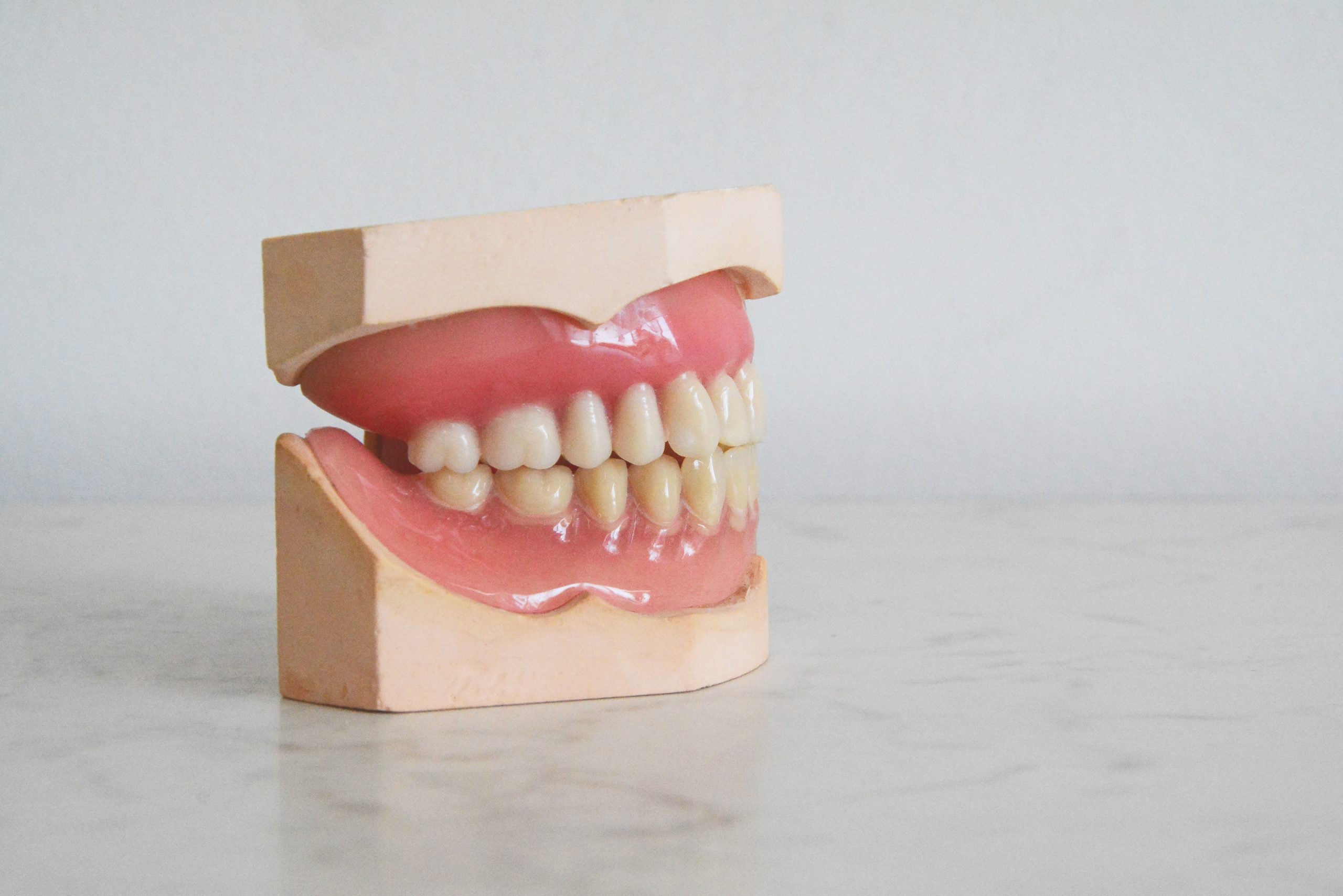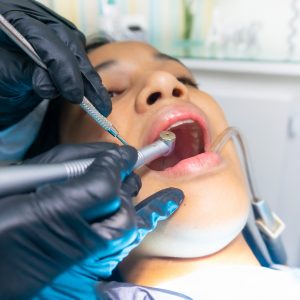Flossing is an essential part of taking care of your teeth and maintaining good oral health. The American Dental Association recommends that individuals floss once per day. Overall, if you’re flossing as part of your daily routine, you know that you’re taking the necessary steps to keeping your gums and teeth healthy.
But what happens if you experience pain between teeth when flossing?
Well, there are several potential reasons that could cause pain between teeth when flossing. These possible reasons range from common issues to more serious dental conditions. Understanding the significance of this discomfort can empower you to take proactive steps towards better oral health and seek appropriate advice from dental professionals when needed.
Less Serious Reasons of Pain Between Teeth When Flossing
Here’s the good news! Your pain between teeth when flossing is very likely to be a minor issue. Here are ten less serious conditions that can manifest as pain between teeth when flossing:
Gum Disease
Gum disease (also known as periodontal disease) is one of the most common causes of dental pain. How does gum disease occur? Well, it happens when plaque and bacteria build along the gum line. Some people are more prone to gum disease than others; some people get gum disease even if they brush their teeth every day and visit a dentist twice a year. Regardless, when plaque and bacteria build up along the gum line, this leads to infection and inflammation of the gums. When flossing with gum disease, the floss may come into contact with the irritated gums – which can cause gum pain. Sometimes, the pain can be accompanied by swelling or bleeding.
The presence of gum disease can also result in gum recession, which exposes the sensitive tooth roots. When flossing, the thread may irritate the exposed roots, causing additional pain. It is important to address painful gums promptly, as it can lead to more severe complications if left untreated. Dental professionals can provide proper guidance on oral hygiene practices, recommend appropriate treatments, such as deep cleaning or antibiotic therapy, and emphasize the importance of regular dental visits to manage gum problems or gum disease effectively and alleviate pain between the teeth when flossing.
Tooth Decay
Tooth decay can cause pain between teeth when flossing. Tooth decay occurs when harmful bacteria in the mouth produce acids that erode the enamel, resulting in cavities. When these cavities develop between the teeth, flossing can cause pain. The dental decay can weaken the tooth structure, making it more prone to sensitivity and pain. When pressure is applied with dental floss, the affected tooth may respond with sharp pain. It is important to address tooth decay promptly, as it can progress and lead to more extensive damage, such as tooth fractures or infections. Dental professionals can evaluate the extent of decay and provide appropriate treatments, such as fillings or dental restorations, to alleviate the pain and restore dental health.
Food Particles
Food particles are one of the most common reasons of pain between teeth when flossing. When food debris gets lodged between the teeth, they can create too much pressure and discomfort, especially when attempting to remove them with floss. These trapped food particles can irritate the gums, leading to inflammation and tenderness. As floss is passed between the teeth, it may brush up against these food particles, causing temporary pain or discomfort. In some cases, the food particles can create a tight space between the teeth, resulting in the floss you are using getting stuck between the teeth or even causing minor abrasions to the gums. Using a gentle back-and-forth motion and rinsing the mouth after flossing can help alleviate the pain caused by food particles and prevent further complications. If persistent pain or difficulty flossing persists, it is advisable to consult a qualified dentist for proper evaluation and guidance.
Canker Sores
Canker sores can cause pain between teeth when flossing. These painful sores can develop on the soft tissues inside the mouth, including on the gums. When flossing, the thread can come into contact with the canker sore, leading to pain. The friction and pressure applied during flossing can further irritate the already sensitive area, causing increased pain. The location of the canker sore between the teeth can make flossing particularly challenging and uncomfortable. Canker sores typically heal on their own within a couple of weeks, but in the meantime, gentle flossing techniques or using alternatives like soft picks or water flossers may be preferred to minimize discomfort. If the canker sores persist, worsen, or are accompanied by other concerning symptoms, it is advisable to seek professional dental advice from a dentist or dental hygienist for appropriate diagnosis and management.
Damaged Tooth Enamel
Damaged tooth enamel can contribute to pain between teeth when flossing. The enamel is the protective tooth surface, and when it becomes damaged, it can expose the sensitive underlying dentin. When flossing, the thread may come into contact with the exposed dentin, leading to sharp or throbbing pain. Additionally, damaged enamel can make the tooth more susceptible to temperature changes or certain foods, further exacerbating the pain during flossing. It is important to address damaged tooth enamel promptly, as it can progress and lead to more severe tooth sensitivity, increased risk of cavities, or tooth fractures. Dental professionals can provide appropriate treatments, such as dental bonding, sealants, or fluoride applications, to protect and restore the damaged enamel, reducing pain and promoting oral health.
Plaque Buildup
Plaque build-up can contribute to pain between teeth when flossing. If you didn’t already know, plaque is a sticky film of bacteria that accumulates on the teeth, particularly along the gum line and between the teeth. If plaque is not effectively removed through flossing and regular brushing with the right toothbrush, it can harden into tartar, leading to inflammation and irritation of the gums, known as gingivitis. When flossing, the thread may encounter the plaque and tartar deposits, causing discomfort and sensitivity. The pressure applied during flossing can further aggravate the inflamed gums, leading to pain between the teeth. Additionally, the presence of plaque and tartar can increase the risk of developing gum disease, which can result in more severe pain, gum recession, and potential tooth loss if left untreated. Regular brushing, flossing, and professional dental cleanings are essential for removing plaque and preventing its harmful effects. Dental professionals can provide guidance on proper flossing techniques and recommend appropriate treatments to alleviate pain, reduce plaque build-up, and maintain optimal oral health.
Sinus Pressure
Sinus pressure can cause pain between teeth when flossing. The sinuses are air-filled spaces located near the upper jaw, and when they become congested or inflamed due to conditions like sinusitis or allergies, it can result in increased pressure in the sinus cavities. This pressure can radiate to the surrounding areas, including the teeth. When flossing, the pressure applied can exacerbate the existing discomfort. It may cause a sensation of pain or sensitivity between the teeth due to the connection between the sinuses and the upper teeth. Sinus-related tooth pain is often experienced in the upper back teeth. It is important to differentiate between sinus-related pain and dental issues. Addressing the underlying sinus condition, such as seeking appropriate medical treatment or using nasal decongestants, can help alleviate sinus pressure and subsequently reduce the pain experienced between teeth when flossing. If the pain persists or is accompanied by other concerning symptoms, consulting a healthcare professional is advisable for proper evaluation and guidance.
Tooth Loss
Tooth loss can contribute to pain between teeth when flossing, particularly in the area where the tooth is missing. When a tooth is lost, the adjacent teeth may shift or tilt, resulting in gaps or spaces between them. These spaces can trap food particles, leading to an increased risk of plaque accumulation and gum inflammation. When flossing, the thread may encounter the exposed gum tissue or irritated gums surrounding the gap, causing discomfort or sensitivity. Additionally, the loss of a tooth can alter the bite alignment, causing changes in the distribution of chewing forces. This misalignment can result in excessive pressure on the remaining teeth during biting and chewing, leading to pain. Regular and careful flossing, including cleaning the areas surrounding the gap, is important to maintain optimal oral hygiene. Dental professionals may also recommend using alternative tools such as interdental brushes or water flossers to clean the gaps effectively. In some cases, dental treatments like dental implants or bridges may be recommended to restore missing teeth, improve bite alignment, and alleviate pain when flossing.
Minor Burn
A minor burn on the tongue or other oral tissues can cause pain between teeth when flossing. When a burn affects the sensitive tissues in the mouth, it can result in pain and discomfort. Flossing, particularly in the affected area, may aggravate the burned tissues, leading to increased sensitivity and pain. The friction and pressure applied during flossing can irritate the injured area, prolonging the healing process and causing discomfort. It is important to allow the burn to heal naturally and take precautions to prevent further irritation. Gentle flossing techniques, avoiding the burned area, and maintaining good oral hygiene can help minimize the pain between teeth during flossing. If the pain persists, worsens, or is accompanied by other concerning symptoms, it is advisable to consult a dental professional for proper evaluation and guidance.
Acidic Foods
Acidic foods can contribute to pain between the teeth when flossing. Foods and beverages with high acidity levels (such as citrus fruits, tomatoes, vinegar, or carbonated drinks) can erode the enamel, the protective outer layer of the teeth. As the enamel wears down, it exposes the sensitive dentin underneath, making the teeth more susceptible to pain and sensitivity. When flossing, the thread may come into contact with the exposed dentin, causing discomfort or a sharp sensation. Additionally, the acidic environment in the mouth can lead to gum irritation and inflammation, further contributing to pain when flossing. It is important to be mindful of consuming acidic foods and beverages in moderation and maintaining good oral hygiene practices. Using a gentle flossing technique and opting for toothpaste or mouthwash formulated for sensitive teeth can help alleviate the pain and reduce the risk of further enamel erosion. If the pain persists or worsens, it is advisable to consult with a dental team for proper evaluation and guidance.
More Serious Reasons of Pain Between Teeth When Flossing
While pain between teeth when flossing is not typically associated with life-threatening conditions, there are some serious dental and oral health following reasons that can cause such symptoms. It is important to consult with a dental professional for an accurate diagnosis and appropriate treatment. Here are three potentially severe conditions that can manifest as pain between teeth when flossing:
Dental Abscess
A dental abscess can cause severe pain between teeth when flossing. An abscess occurs when an infection develops within the tooth or in the surrounding gum tissue, resulting in a collection of pus. When flossing, the thread may come into contact with the abscess or the inflamed surrounding area, causing intense pain and sensitivity. The pressure applied during flossing can further irritate the already infected tissues, exacerbating the discomfort. In addition to pain, symptoms of a dental abscess may include swelling, redness, a foul taste or odor, and even fever. It is crucial to understand that a dental abscess is a serious condition and should not be ignored. If left untreated, the infection can spread to other parts of the body, leading to potentially life-threatening complications. Prompt dental attention is necessary to diagnose and treat the abscess, as a dental abscess is a serious problem. Treatment typically involves draining the abscess, eliminating the source of infection, and may include antibiotics. In severe cases, root canal treatment or tooth extraction might be required. Seeking immediate dental care for a dental abscess is essential to alleviate the pain, prevent the infection from spreading, and protect overall health.
Impacted Wisdom Tooth
An impacted wisdom tooth can cause pain between teeth when flossing. Wisdom teeth, also known as third molars, often do not have enough space to fully emerge or grow properly. When a wisdom tooth becomes impacted, it remains partially or fully trapped within the jawbone or gums. The pressure from an impacted wisdom tooth can cause pain and discomfort, especially when flossing around the area. Flossing may aggravate the inflamed gum tissues or come into contact with the partially erupted wisdom tooth, leading to heightened sensitivity and pain. In addition to pain, impacted wisdom teeth can cause various complications. They can contribute to the development of gum disease, tooth decay, cysts, infections, and even damage to adjacent teeth or the jawbone. In some cases, impacted wisdom teeth may require surgical extraction to alleviate the pain and prevent further complications. It is essential to have regular dental check-ups and X-rays to monitor the position and health of wisdom teeth, allowing for early detection and appropriate management of any issues.
Oral Cancer
This is very rare, but oral cancer can potentially cause pain between teeth when flossing. Oral cancer refers to the abnormal growth of malignant cells in the oral cavity, including the lips, tongue, gums, and throat. In some cases, oral cancer can spread and infiltrate the tissues between the teeth, leading to localized pain and discomfort. The pain may arise when flossing due to the thread’s contact with the affected area. However, it is crucial to note that oral cancer is usually associated with other noticeable symptoms such as persistent mouth sores, difficulty swallowing, voice changes, and unexplained bleeding. If experiencing persistent pain between teeth when flossing, it is more likely to be related to other dental or oral health issues. If oral cancer is suspected, it is crucial to seek immediate dental and medical attention for proper evaluation and diagnosis. Early detection is vital for successful treatment and improved prognosis.
In conclusion, experiencing pain between teeth when flossing is not a sensation to be ignored or dismissed. Instead, it serves as a vital indicator of potential issues that require attention to safeguard your oral health. While some cases may be linked to minor causes like improper flossing techniques or temporary sensitivity, persistent or worsening pain could be a sign of more serious dental problems such as gum disease, tooth decay, or an abscess. Regular dental check-ups and consultations with your dentist can help identify and address any underlying issues, ensuring that your oral hygiene routine remains effective and your teeth and gums stay in optimal condition.
In the event that your dentist finds nothing wrong, here are some simple measures you can take for temporary relief of minor pain between teeth when flossing:
- Use a Water Flosser: one of the best things you can do to provide pain relief is to utilize a water flosser (such as a Water Pik) to gently clean your teeth, gums, and other areas of your mouth.
- Apply an Ice Pack to Your Inflamed Gums: this is a simple solution, but it’s a great help. There’s nothing better than numbing the pain away!
- Use a Soft-Bristled Toothbrush: this is the best way to help pain that is accompanied by sensitive teeth.
- Gargle with Salt Water: this is one of those tried-and-true home remedies that is truly one of the best treatment options for sore teeth, painful gums, or any other sort of mouth irritation.
- Avoid Cold Foods: cold foods tend to exacerbate dental pain, so we highly recommend staying away from them while you are healing.
If you have met with your dentist and/or other medical professional, and they’ve ruled out anything serious, you may be struggling with hypochondria. Hypochondria is defined as abnormal anxiety about one’s health, especially with an unwarranted fear that they have a serious medical condition. If you think you may be a hypochondriac, we recommend that you check out some of our below articles to help you on your journey:
- What Are Some of the Most Common Hypochondriac Symptoms?
- 10 Proven Ways to Beat Your Hypochondria
- How Do I Find a Therapist for Hypochondria?
Disclaimer: THIS WEBSITE DOES NOT PROVIDE MEDICAL ADVICE.
If you are currently experiencing medical concerns, it’s important to talk to a doctor to rule out any underlying medical conditions. HypochondriacHQ does not substitute professional medical advice or consultations with healthcare professionals. Never disregard professional medical advice or delay in seeking it because of something you have read or seen on this website.




